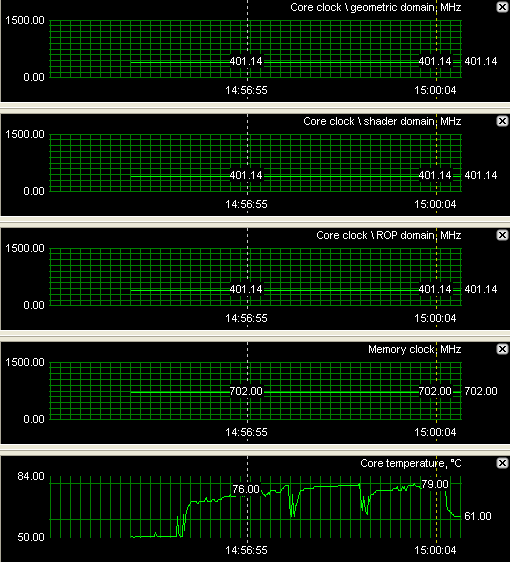Page 3
Temperatures of the graphics card![]()
BioStar is using a non-standard cooler, and quite frankly it's not very good. The core temperature idles at roughly 50 Degrees C, but when there is 100% utilization of the GPU then we see a near 80 Degree temperature. For a successful overclock this is going to be a hinder, which is a shame because in one hand we have the power to overclock but in the other... heat will limit that greatly.
|
|

Noise Levels coming from the graphics card ![]()
When graphics cards produce a lot of heat usually that heat needs to be transported away from the hot core as fast as possible. Often you'll see massive active fan solutions that can indeed get rid of the heat, yet all the fans these days make the PC a noisy son of a gun. I'm doing a little try out today with noise monitoring, so basically the test we do is extremely subjective. We bough a certified dBA meter and will start measuring how many dBA originate from the PC. Why is this subjective you ask? Well, there is always noise in the background, from the streets, from the HD, PSU fan etc etc, so this is by a mile or two not a precise measurement. You could only achieve objective measurement in a sound test chamber.
The human hearing system has different sensitivities at different frequencies. This means that the perception of noise is not at all equal at every frequency. Noise with significant measured levels (in dB) at high or low frequencies will not be as annoying as it would be when its energy is concentrated in the middle frequencies. In other words, the measured noise levels in dB will not reflect the actual human perception of the loudness of the noise. That's why we measure the dBa level. A specific circuit is added to the sound level meter to correct its reading in regard to this concept. This reading is the noise level in dBA. The letter A is added to indicate the correction that was made in the measurement.
We startup a benchmark, we take the dBA meter, move away 75 CM and then aim the device at the active fan on the graphics card.
We measure roughly 47 dBa on the PC with a BioStar 7600 GS, which is to be considered a an average noise level coming from the PC. Again, this is a very subjective test.
|
|
||||
|
TYPICAL SOUND LEVELS | ||||
Jet takeoff (200 feet)
120 dBA
Construction Site
110 dBA
Intolerable
Shout (5 feet)
100 dBA
Heavy truck (50 feet)
90 dBA
Very noisy
Urban street
80 dBA
Automobile interior
70 dBA
Noisy
Normal conversation (3 feet)
60 dBA
Office, classroom
50 dBA
Moderate
Living room
40 dBA
GeForce 7600 GS Galaxy
Bedroom at night
30 dBA
Quiet
Broadcast studio
20 dBA
Rustling leaves
10 dBA
Barely audible

